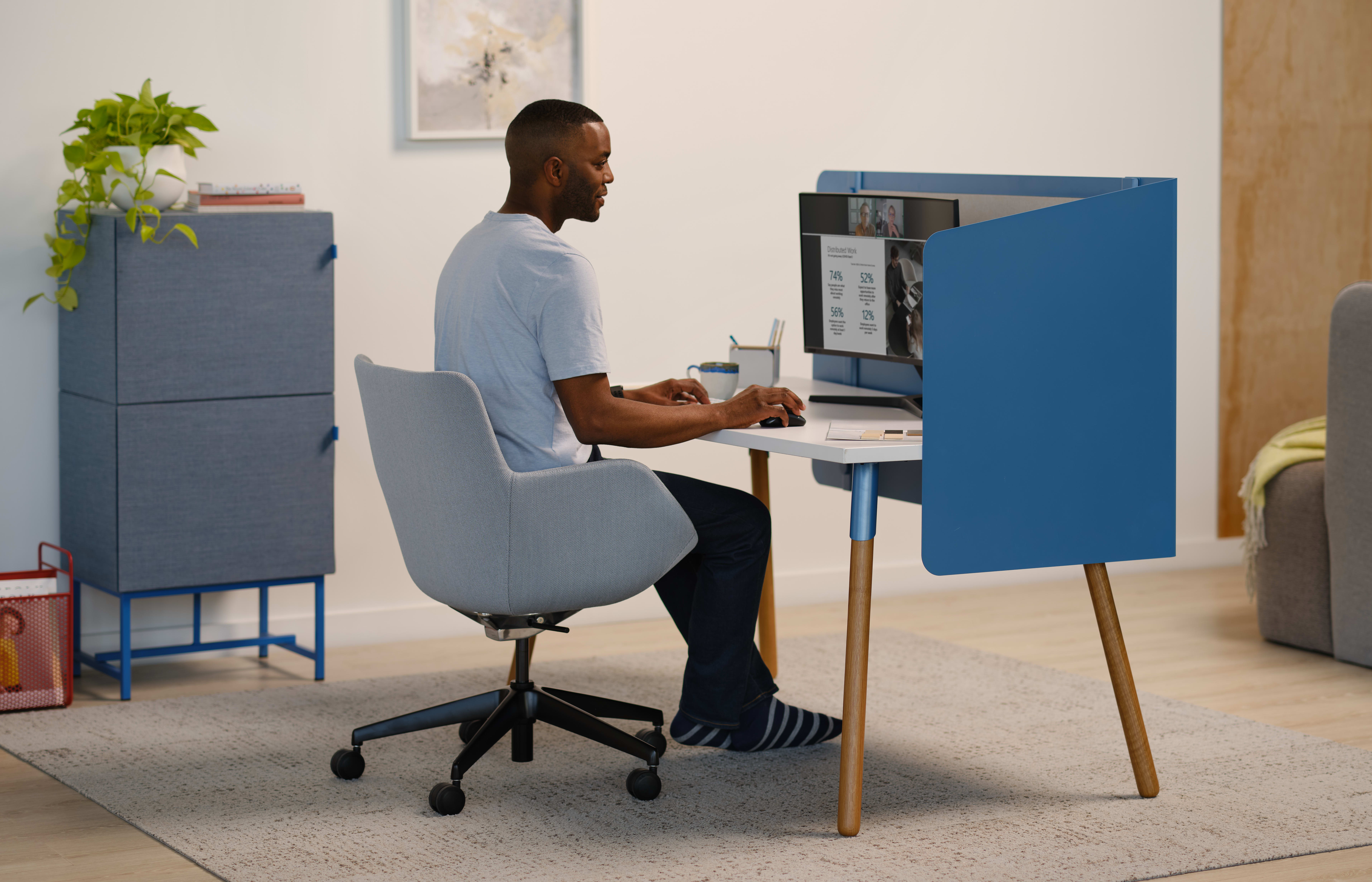To call the atmosphere we're all working in 'chaotic' feels a bit understated at this point. And this chaos is only exacerbated by the ‘hurry up and wait’ of many organizations’ return to the workplace plans. All we can say for sure is that working from home will likely be part of the ‘new normal,’ moving forward. You’ve already been working from home for the last 20 months, so you’ve probably got it all figured out now. But it can’t hurt to do a quick ‘recheck’ to make sure your current work from home set up is the best it can be. So, check out these these tips and best practices and you might find some new useful ideas.
Adopting Distributed Work Best Practices
You know that staying connected with your team is crucial, and you’ve likely experienced some ‘hiccups’. These ideas might help you ‘solidify’ your connections:
- Reinforce Communication Norms: Remind your colleagues about the best way to connect with you (cell phone, email, IM, etc.) and the best time to reach you.
- Keep Your Calendar Updated: Update your electronic calendar to ensure that others have accurate availability information. This includes blocking off times when you truly are not available.
- Check to make sure your ‘status’ on Outlook, Google Mail, Teams, etc. is current and regularly updated. Think of your status like the door to an office. Leave the door open – your status is “Available” when you’re available or may be interrupted. Close the door – your status is “Unavailable” or “Do Not Disturb” when you need to be left alone. Update as your availability changes.
- Respect your colleague’s status: When your colleagues’ status is “Unavailable”, reconsider communicating with them unless the issue is time sensitive.
Recreating Your Office at Home
Working from home may be your ‘new norm’ at least part time from now on, so consider these ideas for making that ‘home office’ work for you:
- Review your ‘home base’ – you know the place you leave your ‘work stuff’: If you have a separate room – excellent. But that’s not possible for everyone, so pick specific table or the end of the kitchen counter or the table on the porch for your ‘home base’. Plus, your company may have a program to help you set up your home office with correctly organic furniture.
- Manage your ‘it’s time to work’ schedule: Start and end your day at a consistent time; this helps reinforce separating ‘work’ from ‘home’. It will also help managing your time, so you are not working 24/7. Adding 2 – 3 hours to your day is a good way to ‘burn-out’.
- ‘Physically’ go to work: To further reinforce the separation between work and home’ ‘commute’ to work by walking around the back yard or to the end of the block. You’re ‘at work’ when you get back to your house.
- If you’ve been ‘catching up with colleagues at a ‘virtual coffee machine, keep it up.
- Take a break: get up, move around, get a fresh cup of coffee, stand outside – you do it at the office so you can do it at home.
Remote Working Tips & Tools
Working from home may be your ‘new norm’ for a while, so reconsider these ideas for making that ‘home office’ work for you:
Communications Check List
- Create a regular cadence for team calls and updates.
- Start calls sharing personal stories - it builds team cohesion.
- Use your web cam – it’s an easy reminder you are talking to your peers; plus, it makes the call more personal. But you can also set team protocols when you just ‘don’t want to be seen.’
- Make communications concise and avoid the norm of copying ‘absolutely everyone.’
- Structure team calls like a virtual ‘stand-up meeting’ – using an agenda, focused, fast, with clear next steps.
- Encourage interactivity and participation by all virtual meeting attendees. This is a new way of working – so ask for feedback and improvement ideas.
Virtual Meeting Etiquette
Desk phone / Cell phone / Headset /Computer Audio:
Mute your cell phone/headset when you are not speaking to eliminate unnecessary background noise. And you’ve surely noticed that sometimes this improves your connection.
- Focus your camera so the view is centered on your face; a view of your forehead, or chin are NOT conducive to effective communication.
- Use a virtual background if the wall behind you is too busy visually. Or if you simply don’t want to share so much anymore.
- Don’t shuffle papers; type loudly, scrape chairs, pencil tap, hum or other distracting, noisy activities if your phone/headset cannot be muted.
Organization / Facilitation:
- Be on time! If the meeting organizer is late, then how important can this meeting be?
- Have someone facilitate the meeting while someone else takes notes so that you minimize audience distraction and keep the meeting moving forward.
- Use an agenda - always.
- Introduce yourself, verify who has joined, and ask all participants to introduce themselves. This encourages engagement and can help taking notes.
- Ask for input by using a person’s name. People will pay more attention to avoid the embarrassment of needing the question repeated.
- Try not to interrupt – whenever possible.
- Thank everyone for their time. The recognition will make them feel good about talking with you again.
- Don’t allow the topic to wander. Be polite but firm if people talk too long or talk over each other.





